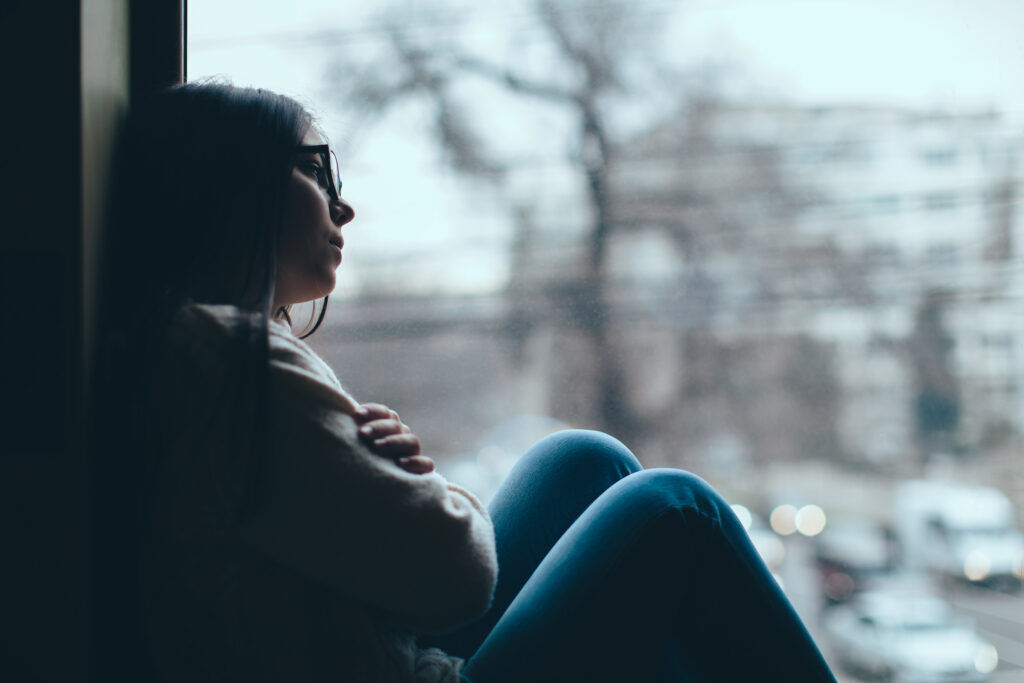The change of seasons in New England is a time where it feels like a lot of things are changing: what we wear, the temperature, the amount of light in the day, how much time we spend outside, and the foods that we eat. And for many of us, the winter months can also trigger significant changes in our mood and behaviors.
This is sometimes called the “winter blues” which affects around 10-20 percent of Americans. The winter blues are when we might lounge around in bed and have a hard time getting up or feel a little more melancholy or lethargic. And, frankly it’s normal for the change in seasons to affect us, since so much of our environmental stimulus, especially light/ dark and the change in temperature, naturally influences our physiology, sleep, and mood.
However, the change of seasons can be a more extreme and disruptive experience for around 5 percent of Americans. Called “seasonal affective disorder” or SAD. SAD is a type of depression brought on by the change in seasons, from fall into the darker winter months, and the less common spring into summer. According to health professionals at the Mayo Clinic, most people with SAD are triggered by the change into darker, colder months when they start oversleeping, feeling low energy, have a depressive mood, crave carbohydrates, and gain weight.
Now, you might be thinking, “Wait, I have that experience every winter too, do I have SAD?” Maybe. But these symptoms are part of having the “winter blues” too, whereas other symptoms of SAD include: depressive episodes that occur during a specific season for 2 consecutive years, losing interest in activities you usually enjoy, feelings of hopelessness, having difficulty concentrating, suicidal thoughts, and feeling sad most of the day every day.
Some people are at higher risk than others for SAD, including: family history of SAD or depression, living far from the equator where the changes in light/ dark are most extreme, and low levels of vitamin D.
We don’t know what causes the onset of SAD, but there are specific physiological changes that happen in our bodies when sunlight is diminished. Some research suggests that the reduction of sunlight in the autumn/ winter could disrupt our circadian rhythm—our 24-hour body clock that our hormones, sleep, and wakefulness all depend on. The reduced levels of sunlight can also significantly affect mood since sunlight impacts serotonin levels; serotonin is one of the neurotransmitters in our brain that affects mood. Our sleep patterns and mood might be further impacted by the change of season through melatonin disruption where the loss of light impacts the production of melatonin, which occurs in the morning and midday when we take in natural sunlight. But that doesn’t mean everyone experiences symptoms to the extent of having SAD.
Considering all this information it’s recommended you see a doctor when you notice that you feel down for days and weeks at a time, your sleep patterns, mood, and appetite have changed, and that you’re using substances for comfort or relaxation.
There is clear research on the effective management and treatment of SAD. According to the Cleveland Clinic, these include things like light therapy (phototherapy) where you sit 2-3 ft away from a special light that’s 20-times brighter than regular indoor light for 15-30 minutes every morning. Cognitive behavioral therapy (which has been shown to produce the longest lasting effects of any treatment approach), as well as antidepressants, vitamin D supplements, and spending time outside.
It’s important to point out that light therapy is contraindicated (may be harmful) for people who have diabetes or a retina condition, take medications that make them sensitive to light, or those with bipolar disorder. So, if you’re seeing your own experience reflected here and want to skip the diagnosis and just go get a light to sit next to, that’s not always the right thing. Also, if you are having symptoms of SAD and feel like you need support, it’s important that you reach out and let your doctor know what’s going on. There’s no shame in having difficulty no matter what brings it on. If you haven’t noticed, going through difficult times, seasons, and experiences is part of being human, and getting the support that you need to feel good is your right.
While we can’t control the weather, we can control what we can regarding our health behaviors and environment. So, we can do specific things to help prevent and address SAD or the winter blues when they come up, like getting outside everyday even if it’s cloudy, getting exercise for 30 minutes, three times a week, seeing friends, and seeking out help from mental health professionals when you experience symptoms. I hope this was helpful. Let me know @habitqueer on Instagram.
–Meghan Crutchley









More Stories
Dancing in Hard Times
Breaking Access Barriers: Connecticut’s Bold New Step Toward Mental Health Parity
Three Gay Guys Talking Cars